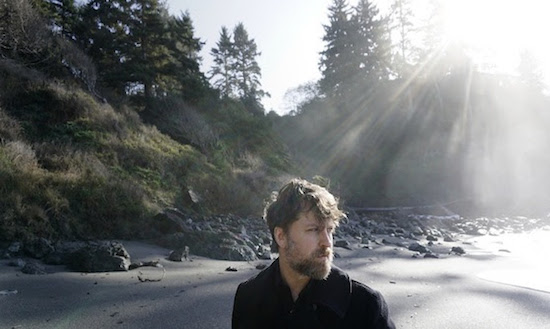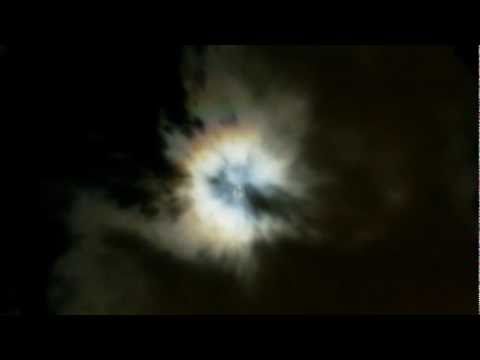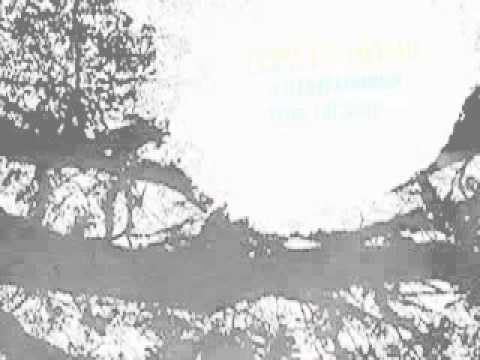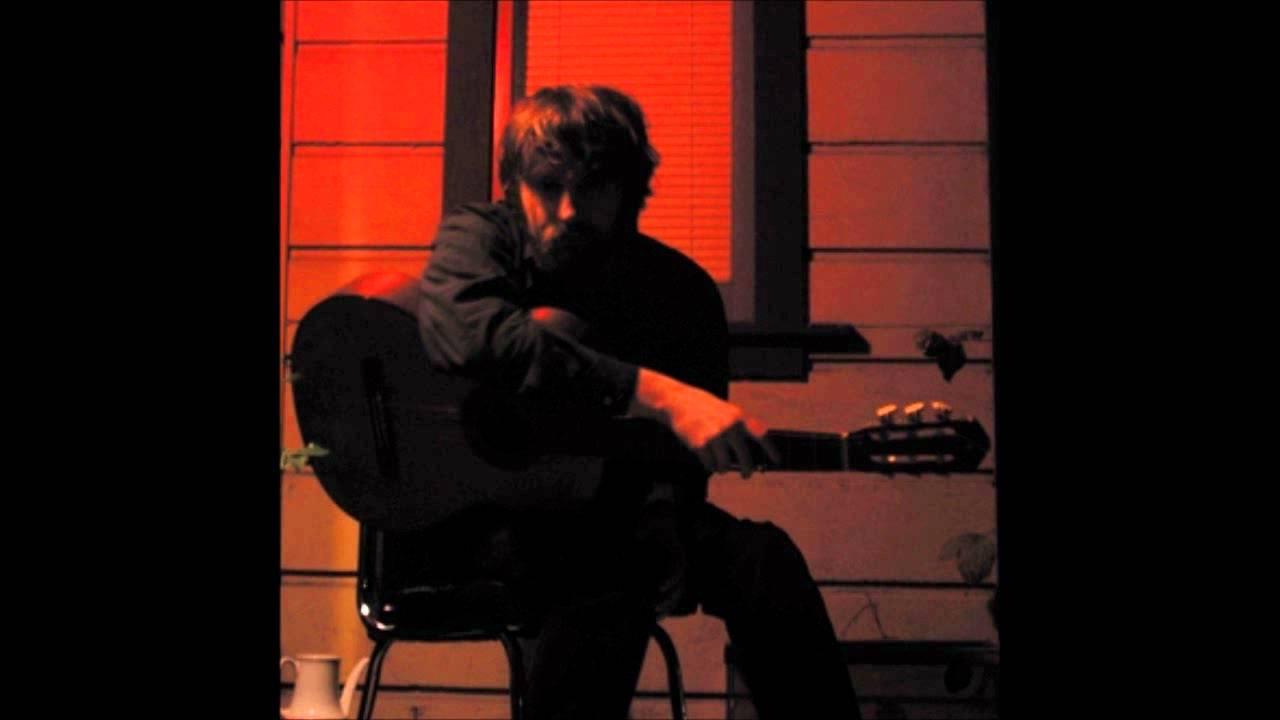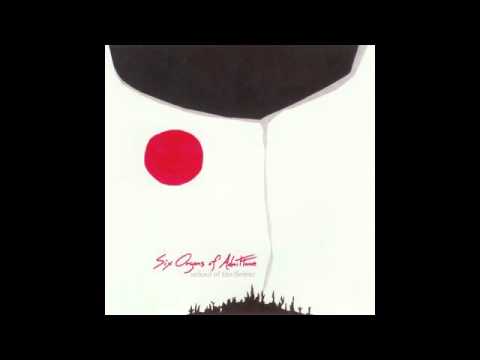Portrait by Elisa Ambrogio
‘The universe is the body of a beast, / Stretching out and playing / For you and me.’ – Six Organs Of Admittance, ‘Threshold of Light’
The sonic world of Ben Chasny encompasses a huge range of atmospheres. Bleak catharsis, reverential calm, awestruck psychedelia and subliminal undercurrents are just some of the auras evoked in his work as Six Organs Of Admittance and, for that matter, in any one of the host of collaborations, bands and side-projects that this fierce autodidact has had a hand in. Yet in any of these modes, there is always the stamp of an artist who is trying to look beyond the trappings of music as we commonly know it – genre, form, context, cultural capital and the rest of it. One truly gets the sense that Chasny is trying to access a deeper ground of experience than most musicians in modern alternative music, and this is evidenced by his dogged pursuit of a completely idiosyncratic vision throughout the whole of a musical career – which is now in its third decade.
If all this seems grossly off-putting to the more worldly-minded, it bears saying that any notions of pretension are completely blown out of the water when talking the man. Try speaking to him about how he managed to create a system of aleatoric music composition using by piecing together the ideas of occult historians and 14th-century Majorcan monks, or how both alchemy and postmodernist theory feed into his new album, Burning The Threshold, and his deep-seated strand of self-deprecation undercuts any whiff of pretension. So if you want to explore his back catalogue, to make things easier for you, here’s our guide to the sonic, personal, and intellectual history of Ben Chasny.
Six Organs Of Admittance
Out in Humboldt County, CA, a young Chasny was growing restless within the strictures of his first two serious band projects – the bleak, Dead C-influenced Plague Lounge and the damaged free psych of Tonal Shrine. At the same time, he was getting his mind blown by two seemingly irreconcilable undercurrents: the contemporary freak scene of artists like the No Neck Blues Band, Tower Recordings and K Salvatore, and the whimsical world of acid folk, with groups like Magic Carpet, the Khalsa String Band and Stone Angel emerging from the depths of the reissue wilderness. It was this potent stew that informed the early Six Organs Of Admittance sound. A dizzying whirl through steel-string ragas, harsh noise and liminal drones, Six Organs’ self-titled debut was initially meant to be a one-off.
Ben Chasny: I guess I always just liked the idea of the lone person doing bedroom recordings. Those recordings always appealed to me; whether it was KK Null releasing a record when he lived with his grandma, or Richard Youngs, or Loren Connors. Just that thing of a lone person making strange records – that was a world I wanted to participate in.
For me, that sort of stuff [the acid folk and noise music] was coming from the same distributors. You had Byron Coley at Forced Exposure writing these reviews in the magazine. And that was where I was getting my records from Ajax records or Black Jack records. I was getting most of my stuff through mail order at the time and you just had this combination of psych reissues with new strange music. To me it was all coming through the same area. That’s how it got into my head. So, I definitely blame Forced Exposure because I got my first Bert Jansch CD from them, with a Sun City Girls CD and a Dead C record too. To me that stuff all came from the same place and combined. I was into folk separately before that, and I didn’t really make the connection. Separately listening to Fahey and Kottke and on the other hand Boner Records stuff, like Steel Pole Bath Tub and the Melvins. And it was very separate. But once I found these distributors everything came through the same tunnel.
Dark Noontide
Recently reissued on vinyl by Holy Mountain, Dust And Chimes was Chasny’s return to the Six Organs Of Admittance concept. This time, the noise aspects were shorn away to a sound that was much more beholden to classic acid folk – see Chasny’s Marc Bolan-esque vocals on that album. However, it was also around the time of Dust And Chimes and its follow-up, 2002’s Dark Noontide, that Chasny began immersing himself in the work of Henry Corbin, a French philosopher and theologian specialising in the fields of Sufi Islam and Gnosticism. His work on the active imagination would continue to influence Chasny’s work up to the present day (the title for Dark Noontide comes from a line in Corbin’s book The Man Of Light In Iranian Sufism). For those who are keen to look deeper into this period, it’s worth digging out the 2009 Six Organs release RTZ a collection of side-long recordings made during this period, which encompass mantric commune folk, NWW-esque noise and Near-Eastern rock, as well as The Manifestation 12” of 2000 – pretty much the apotheosis of psychedelic folk.
BC: When I was making those records I was still living in Humboldt County, and there was an excellent bookstore there called Bohemian Books. The owner just had incredible taste, he had like first editions of Philip K. Dick; all this stuff that you wouldn’t expect to see in this really small town. And he had a lot of Henry Corbin. We would just talk all the time. He even had original Nurse With Wound records. So I just kind of picked it up from there.
For me Henry Corbin, the way that he writes about certain esoteric matters, is in a phenomenological way that refuses a New Age lens. But at the same time he’s very much responsible for a lot of New Age thought, because he was a very syncretic thinker.
There are some books to start with, and some books are just like, ‘What the fuck?’ I would not start with Man Of Light. A really good one to start with is probably Alone With The Alone (Creative Imagination In The Sufism Of Ibn Arabi: ‘Alone With The Alone’ also became a track title on the 2007 Six Organs album Shelter From The Ash). Just the way that he approached certain ideas, it was fairly similar to William Blake in a way. A little bit of a revolutionary stance if you read him in a certain way. I know some people who read him as a traditionalist, which is very interesting because just today in the New York Times they talked about Steve Bannon being interested in all these traditionalist writers like Evola and stuff, and I know people who’ve read Corbin as a traditionalist, which I think is not correct at all. I read him as more of a spiritual anarchist really. I just found him fascinating.
Corbin creates this world – most of all his examination of the imagination and what the imagination was for him. Some philosophers would think of the imagination as a synthetic ability, how you put different things together. Artists more think of the imagination as creativity. So I really like the way that he presents the imagination as a faculty that allows one to experience worlds that are not exactly physical but are real nonetheless. And that really appealed to me as a young man making music trying to explore the ideas of the imagination.
Field Recordings From The Sun
Hankering after some rock action, Chasny began aligning himself with the local high-energy psych unit Comets On Fire. The band had already released a debut album of coke-fried basement jams, but it wasn’t until 2002’s Field Recordings From The Sun, the first album they released after Chasny joined the group, that they really harnessed the power of assimilating more avant currents into their already bracing hard rock. Field Recordings eats up free jazz, percussion jams, haywire electronics and even skewed psych-folk (in the Chasny-penned ‘The Unicorn’), but the recording sessions weren’t without their trials. Aside from Chasny breaking the neck of lead singer Ethan Miller’s guitar during a particularly rigorous noise session, he also tried to get the group to submerge the album tapes in barrels of oil – to get that really nasty sound, presumably.
BC: I did suggest that to him. I was in a particularly hungover and nihilistic spot in the back of the car. When I was finishing the last tracks on Dark Noontide I was just moving to Santa Cruz, and though most of the people from Comets are from a small town called Eureka, in California, I didn’t know them up there. So when I moved to Santa Cruz I came across them almost in expatriate style. I really wanted to play rock music at the time. I remember making Ethan a list of good bands that had two guitar players as kind of my proposal, and then he let me in the band.
Do you think you were the one that brought some of the more experimental, noisy aspects to the band?
BC: Noel Von Harmonson who who plays the Echoplex and oscillator in the band, he’s really well-versed in free jazz and experimental music. So they had that a little bit. I think what I probably brought was more of what was going on in the underground psych scene at the time. Turning them on to more like Twisted Village and maybe a little bit of PSF, consistently playing High Rise and Mainliner and stuff like that.
Has the new Comets already been recorded?
BC: There’s a lot of music that’s been put down over the years. We’re trying to figure out what to do with it and to agree on what it should sound like. There are a lot of strong personalities in Comets and it’s a complete democracy, so it takes a little longer for us to do anything than most bands.
For Octavio Paz
After the psychedelic excesses of the first few Six Organs records came moments of relative calm in the form of two sister albums of 2003, For Octavio Paz and Compathia. These records saw Chasny cultivate the principles he is now known for – less psychedelic and riff-oriented that his early work, these albums foster an aura of reflexive calm and hushed reverence, with Chasny’s burgeoning melodicism providing a counterpoint to his more acidic touchstones.
BC: The Octavio Paz and Compathia records were actually recorded at the same time and I just split the songs up. I just put all the instrumentals on Octavio Paz and the singing songs on Compathia. But there’s little hints that they’re related in that I got the term compathia from [the poet] Octavio Paz. Plus, they’re the only record covers I’ve ever done that I’m on the front of, so they’re kind of meant to be sister records.
For the sing song stuff on Compathiaa I was pretty heavily influenced by Nikki Sudden And The Jacobites. I was listening to them religiously at the time. And for the instrumental stuff I was listening a lot to Keiji Haino’s blues record as well as Leonard Cohen’s Songs Of Love And Hate. With a lot of Mick Turner solo records.
I find it interesting that you’re influenced by Haino, because sonically your styles seem so different.
BC: I’ve played on so many festivals with Haino that I’m kind of afraid to call him an influence. But definitely when I was younger. I saw Fushitsusha play in 1996 in San Francisco. It was technically their first show ever in the US. So his show blew my mind, just rearranged what I thought a live show could be. Just an all-encompassing aura and power and melancholy.
School Of The Flower
2005’s School Of The Flower reconciles the seemingly contradictory strands that were emerging in previous Six Organs work – the contemplative, emotive and increasingly melodic nature of Chasny’s solo guitar and vocal compositions, along with the thought-cancelling psychedelia of his avant-folk impulses. This was Chasny’s first recorded collaboration with feted free drummer Chris Corsano, a relationship that’s continued to this day in their work as Rangda. Corsano, moreover, was somewhat totemic in the so-called ‘free-folk’ milieu of which Chasny was also a part, playing in groups such as Sunburned Hand Of The Man and MV & EE.
BC: I met Corsano the first time I came to Western Massachusetts. Byron Coley had invited me to play, probably the second Six Organs show, and that’s when I met Chris and I saw him play a show the next day. Like anybody who sees Chris play, I thought it was just incredible. So I went up to him and said ‘I’d love to play music with you.’ We were always in touch and always playing shows.
I always have these ideas for records, like they’re going to sound like this band or that band and they always just end up sounding like Six Organs. But for that record I was like, ‘I’m going to make my Alice Coltrane record.’ So I kind of wanted a free drummer, and Chris is one of my favourite drummers.
It’s one thing to have people describe what you do as a scene, but that scene was labelled with the worst name. Like, ‘black metal’? Killer. ‘Doom’? That’s killer. But ‘freak folk’? Fuck that!
Chasny The Collaborator
Six Organs Of Admittance has featured a range of musical contributors over the years, but it remains very much a project dominated by Chasny’s personal vision. So, on top of his work in Comets, he gets his kicks in other projects working with a whole host of outlier musicians across the world. These include, but are not limited to, the creepy abstractions of Badgerlore (his duo with Rob Fisk of Deerhoof), his guitar contributions to Current 93, and Coypu – the free-floating, cinematic instrumental psych group featuring members of Blind Cave Salamander. Other notable projects include August Born, his tape-exchange collaboration with Hiroyuki Usui, and New Bums, his acoustic duo with Donovan Quinn of The Skygreen Leopards.
You’ve collaborated with so many people in the past. What’s your motivation in that? Is it more a social thing – wanting to meet and play with your favourite artists – or is there more of a focus purely on the art?
BC: Probably the art, in that a lot of the people who I want to collaborate with can do something that I can’t do. Like with New Bums and Donovan Quinn, he is seriously one of the greatest songwriters in terms of words that is alive right now. So I really wanted to play with him to experience that, to play music with these really great words.
The L record that Hiroyuki really influenced early Six Organs, as far as like laying down music that felt really late night or early morning.
You said the concept for Six Organs came out of a whole night spent playing records (Bob Bannister, Van Morrison, and the Dead C on repeat). Was the whole late night/early morning vibe something you’ve aimed for with your sound?
BC: With psychedelic music, or music that’s called ‘psychedelic,’ it’s never been the overt motions of psychedelia that have interested me, like the paisley shirts or whatever. It’s been the alien aspects of psychedelia, the off-kilter aspects, that inspired me. So it was more that I wanted to do the off-kilter aspect than the overtly psychedelic aspect. And I think that’s kind of where Henry Corbin came in, because his ideas about the imagination and the way he was writing, he was writing about stuff that was very psychedelic but not in a psychedelic way.
The Sun Awakens
2006’s The Sun Awakens and the following year’s Shelter From The Ash saw Chasny bring Six Organs into a rock context, with a full band line-up bolstering his increasingly expansive and heavy song structures. This was sometimes to an almost bombastic degree, see, for example, the 24-minute ‘River Of Transfiguration,’ which sounds like the Melvins’ Lysol played by Tibetan monks.
BC: After School Of The Flower, it seemed like the move most people would make would be to be more accessible. So I wanted to do something that was less accessible. I was playing a lot of shows with Om. Al plays on the last song on the record, and I was listening to a lot of Popol Vuh’s heavier drone records at the time. That’s the first record that I recorded with Tim Green, who did the Comets stuff, and he’s a very rock producer. He’s recorded the Melvins and things like that, so a lot of the sounds just have like a heavier production sound to them.
That long track is pretty amazing. Was the title influenced by the Alice Coltrane record Transfiguration?
BC: It’s sort of a tip of the hat to The Transfiguration Of Blind Joe Death, so it’s a little bit of a Fahey reference. But at the same time that was really Popol Vuh-influenced.
When Shelter From The Ash record came out, a lot of people assumed the imagery was from Cormac McCarthy’s The Road. It was actually more about the Iraq War, at least some specific songs. I thought people would pick up on that when I printed the web address for Veterans For Peace in the liner notes but it seems to have gone unnoticed. My father is a Vietnam veteran who was drafted and told me of Veterans For Peace. Being the son of a vet, hearing stories, and seeing what was going on at the time in Iraq, it all sort of swirled around in my brain at the time. A sad thought was that when that record came out, there were kids in America who were eight years old who are now fighting in the Middle East. I don’t think I’d have believed that the war would still be going on if you told me that back then.
Luminous Night
2009’s Luminous Night saw Chasny go into the studio with Randall Dunn, founder of ethno-psychedelicists Master Musicians Of Bukkake and producer of a whole host of heavy acts, including Wolves In The Throne Room, Earth, and Sunn O))). Aided by Dunn’s richly textured sonics, the album melds weighty folk songs, visceral ambience and a sense of searching, plangent spirituality. Dunn would also mix the next Six Organs effort, 2011’s home-recorded Asleep On The Floodplain.
BC: I had just moved to Seattle at the time, and it’s a very dark and rainy place – I think they get about three weeks of sun [per year]. A lot of the texture on that was Randall. I’ve got to give him credit for making that record so colourful. Randall has a lot of amazing ideas. He’s one of the most intelligent and creative people I’ve ever worked with. He’s very into heavy music and I wanted to see what sort of textures he could bring to the more acoustic side of things.
I created a drone at home on a four track cassette tape and we buried it in the mud for like a month and a half. Kind of taking off from that idea with Comets. Then we dug it out, and put it in a four track, and Randall had the idea to run it through some really huge Sunn amps and put it in the studio. He turned it up so fucking loud. It’s a cassette on a four-track going through these Model T Sunn cabs so loud, and it just created a totally different sound from the original. Randall’s nickname should be ‘Mr. Texture.’
You also released Maria Kapel around this time, a solo guitar album recorded in front of an audience in a church in Tilburg.
BC: Those guys [at Incubate Festival] treated me incredibly, and I made a lot of amazing friends over there in Tilburg, it was part of a project where they would bring people from other countries to interact with local things. What they had me do was go around and look at all these chapels for the Virgin Mary. There was about 500 of them, but every chapel is interesting and different and kept up by the community, they have really interesting history in that they were a subversion of the church in a way. Communities would gather round the chapels more than go to the church, get married at the chapel, for example. It had a slightly pagan aspect to it, which isn’t just my interpretation of them – my guide who knew all about them confirmed that. It was one of my favourite things I’ve ever done.
The way you realised your part of the project (solo guitar) was so simple, but in a way that was one of the hardest things to do. It was purely creating compositions to express these ideas.
BC: Right. And it presented a question: how does one represent an experience with music? There are different ways to go about that. How does that music actually represent that experience? That’s when I started thinking about the ideas of Gaston Bachelard, who’s always been an influence in my stuff. He kind of set up a programme for me in his writings, on memory. Basically, a space is a space because of the memories one has within that space. So, I was kind of working off of that idea with Bachelard so it wasn’t just an interpretation of an experience, it was totally engaging in the memory, being totally aware of the memory of that experience and using memory as the space itself. For me, he presented a way to approach the project.
One of the names of one of the tracks on that album is where Hazrat Inayat Khan (Indian musician and Sufi mystic) sat down with some of his followers and had a spiritual experience. Were you aware of that when you named the track?
BC: No, I had no idea. But his Mysticism Of Sound And Music is an incredible book, and also a very big early influence. You kind of gave me goose bumps man, that’s fuckin’ crazy!
The Hexadic System
Fans used to the rolling fingerpicking and drone-based extrapolations of earlier Six Organs work were got a shock to the system with the release of 2015’s Hexadic, an album that showcased Chasny’s self-developed Hexadic compositional system. Using a deck of cards to determine tonal and rhythmic developments, it often manifested in moments of unsettling atonality. While the 2015 album was realised in the medium of blown-out, Japanese-influenced destructo-rock, 2016’s Hexadic II used more acoustic strategies to achieve its freaky ends.
A lot of people have talked about the Hexadic System in terms of how it’s similar or dissimilar to other aleatoric techniques. But there wasn’t a lot about how you actually produced the system. Some really idiosyncratic stuff went into that, like Frances Yates and Ramon Llull.
BC: As a note, I went back on an old No Neck Blues Band or K Salvatore record and they did dedicate a record to Frances Yates, 20 years ago, so they beat me to it! It was interesting to put that project out there. I think there’s a certain cynicism with music and people are so used to the machine of publicity.
I had a lot of similar reactions that would compare it to John Cage and Brian Eno. Of course you can’t get out from the shadow of Cage, but when I started to mention all that other stuff people were just like ‘Oh, woah, that’s too much, you just keep that to yourself.’ So that was pretty funny. People have been doing that music and games thing for a really long time, Mozart had his dice game. So I wasn’t trying to present something like, ‘Hey this is a brand new thing.’ But I definitely was trying to collect disparate ideas and see how they could work together. A lot of the ideas just pointed to other ideas. I would be working with an idea of using cards for three octaves and that just gave you the number 36, and I saw that 36 was also just the number of the (occult system) Square Of The Sun, so I thought, ‘Maybe I’ll bring that Sun in, see what can I do with that as a compositional system.’ But yeah, you do all this work on the book and you eventually find out every fucking thing has been done before. But hopefully nobody’s combined everything in the system. It was a really fun project because there was a lot of research.
You are a very erudite guy. And you didn’t go to college, so I’d say you’re very autodidactic.
BC: I think I’m just bored. I’m just bored man, and I’m grabbing a book. A lot of time off when you’re playing music. ‘I’ve got two months until the next tour, what am I going to read?’
Burning The Threshold
Flying completely in the face of the developments of the Hexadic albums, Chasny’s new effort under the Six Organs moniker is an exquisitely melodic album, though it nevertheless carries a heavy metaphysical clout. Featuring contributions from a slightly newer generation of psychedelic folk voyagers such as Ryley Walker, Haley Fohr and Alex Neilson, it’s a gorgeous instalment in Chasny’s questing journey, exploring themes as diverse as alchemy, Egyptian burial rites, the poet Wallace Stevens and the relationship between transcendence and immanence.
You’ve mentioned Aaron Cheak, and you touched on the subject of alchemy in the interview you did with Misaki Batoh of Ghost. Where did that interest in alchemy come from?
BC: Aaron Cheak I learned about when I played at the Esoteric Book Conference in Seattle. It’s a really nice conference put on by Ouroboros Press. I just think he’s a great writer on things that have to do with alchemy. That word has been so diluted by now, it means so many things, but it’s just generally transformation. He [Cheak] put together a book called Alchemical Traditions, and it’s one of my favourite books on the subject. He’s incredibly intelligent.
I’m not a practicing alchemist, I mean there are practising alchemists aren’t there? But I enjoy reading about it. The interesting thing about alchemy is that you can apply it to a lot of different things, and it doesn’t really mean it’s one thing or the other. There’s a physical component and an internal component to it. ‘Threshold Of Light’ comes from Alchemical Traditions. Although it’s more about Egyptian burial practices, which does have a relationship to alchemy. But I don’t think this is different from most musicians, every musician’s reading a book and writing about it, that’s where a lot of people get their stuff, I think.
Your reading is particularly idiosyncratic though.
BC: [laughs] That just happens when you have no direction, I think!
tQ: With ‘Taken by Ascent’, I saw there was also the reference to Deleuze.
BC: Unless you’re a philosophy major, which I am not, you have to go to the secondary material and lectures with him, just to crack the code. So, the word ‘transcendence’ is always used. This is a good example of how it goes back to psychedelia, and trying to not be psychedelic in the way that it’s usually conceived of. And this word is so overused. So Deleuze is very much a non-transcendent writer, and he’s very into immanence, this idea of of life and that one doesn’t need to look beyond what you can experience. There’s not a transcendent aspect. That song is very much influenced by a line of thought of immanence. So I wouldn’t say that song was trying to write a thesis on Deleuze. But the idea to write a song that embraces immanence might have been from him, so that’s why I tried to put a little bit of that into the song. But when I read interviews with musicians I’m like, ‘Fuckin’ come on, man. That’s so pretentious!’
Burning The Threshold is out on 24th February on Drag City

